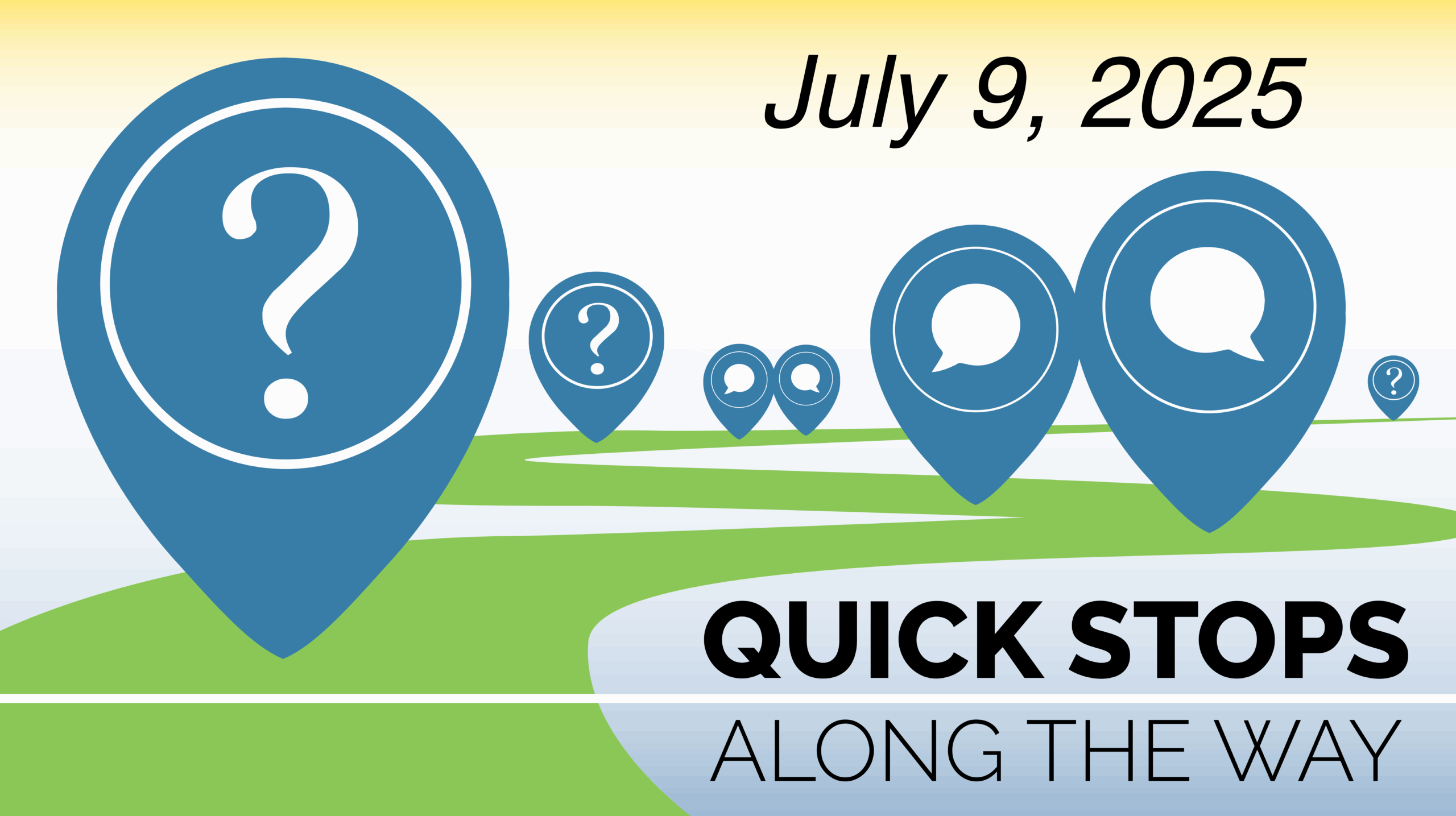Quick Stops Along the Way is a monthly collection of issues, challenges, and thoughts I think you’ll find helpful on the road ahead. Send your questions to me for future Quick Stop posts.
As grant deadlines approach, it’s common for funders to receive calls from nonprofits wanting to gauge interest in a particular program, project, or idea. One such call led to a meeting with the executive director to discuss a new program she was considering.
Ten or so minutes in, I was curious about the origin of the idea. Were other nonprofits doing something similar? Did it yield positive results, or at least useful information?
Were lessons learned that could help plan the new program?
I wasn’t surprised the idea blossomed after reading an article, but soon learned there had been no discussion with the board of directors or staff on how to implement the program. The idea was interesting, but my mind swirled with questions.
Suggestions for exploring ideas and programs before the funder talk.
1. Trace the source – Where did the idea originate? A trend based on your experience? A need you’ve seen repeatedly? An unexpected success when the response to a need yielded an idea?
2. Scan the landscape – Are others doing something similar? Who can you contact for more information? What can you learn from them – successes and failures alike?
3. Involve your team early – Engage volunteers, staff, and board members to shape the idea, raise concerns, and surface possibilities.
4. Test for mission fit – Does the idea align with your mission and strategic priorities?
5. Start small – Can you pilot the concept on a limited scale to learn before seeking funding?
6. Listen widely – Talk with clients and community partners. Their feedback can surface ideas to improve your idea before talking to funders.
Even as questions about the program were swirling, another set of questions began forming.
Questions funders ask themselves before deciding to write a check.
1. Match mission to mission – Does the organization’s new program idea align with our funding mission?
2. Funding untested ideas – How much risk are we willing to take on an untested idea? How long are we willing to give the organization to work through start-up challenges?
3. Fund alone or in partnership – Can we commit sufficient funds to start the new program, or do we need partners to demonstrate the program’s effectiveness?
4. Fund today or long-term – Are we willing to commit funds for multiple years to see the program’s results? Or are we the start-up funding, expecting the organization to seek funders for future years?
5. Expectations and success indicators – What results do we expect? Are they clear to the organization?
6. Information and follow-up communication – How much information do we want to see on a project, and how often? Can we wait until the next funding cycle? Are our expectations clear?
It all comes down to communication.
Nonprofits and funders both bring important questions to the table. Strong relationships form when each understands the other’s concerns. Good communication depends on this mutual awareness.
Open, honest dialogue not only helps spark ideas for needed or improved services—it also helps keep those ideas alive.
The executive director quickly realized she lacked key information. She wasn’t sure if my interest as a funder was casual curiosity, serious but pending answers, or ready to move—“how soon can you start? The check’s in the mail.”
Getting funds to good ideas requires asking and answering key questions. When nonprofits and funders work together on an idea, services are created, grow, and improve. Change happens. Use the power of questions and answers to create your next best partnership.
Learning at the Leading Edge
A Quote for Reflection
Leaders should celebrate change and evolution…Change allows us to innovate and adjust, and no matter how scary it is, it is needed.
Patrick Riccards
Driving Force Institute
Like it? Use it. Share it. Comment below. Also feel free to submit ideas for future posts.
All rights reserved. Dawn Franks.


